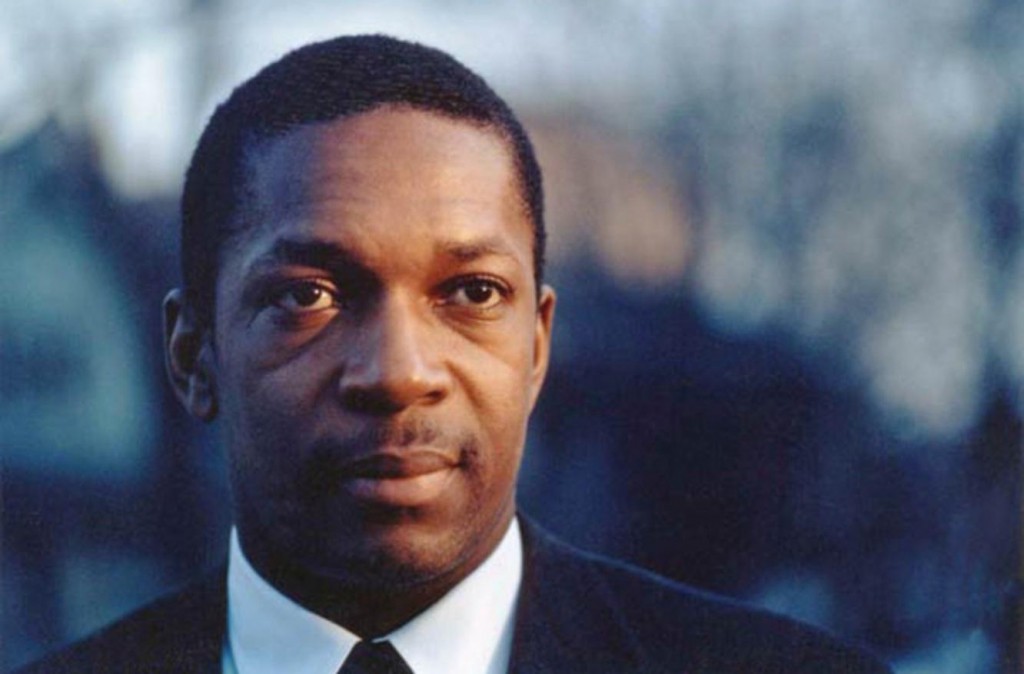May 12th, 2015
An Animated
John Coltrane
Explains His True
Reason for Being:
“I Want to Be
a Force for
Real Good”
By Jonathan Crow
Last week, we posted an interview with the late, great Ray Bradbury that was brilliantly animated by the folks over at Blank on Blank. This week, they unveil a new piece featuring John Coltrane. You can watch it above.
Coltrane is, of course, one of the true giants of 20th century music. He first got attention playing with the Miles Davis Quintet in the mid-1950s on albums like Relaxin’, Cookin’ and Steamin’ before he released his seminal solo album Blue Train. But his career quickly faltered. He was hooked on heroin and Davis, a former junkie himself, fired him from the Quintet. When he cleaned himself up, Coltrane found he was a changed man. “In the year of 1957,” he writes in the liner notes for his masterpiece A Love Supreme, “I experienced, by the grace of God, a spiritual awakening, which was to lead me to a richer, fuller, more productive life.”
Throughout the 60s, Coltrane sought to express his rapidly evolving sense of spirituality through music that grew ever more complex and avant-garde. Late period Coltrane is a far cry from the moody grace of Blue Train; it’s a cascade of frenzied notes that can be as sublime as it is discordant and challenging.
The piece above is a recording by Pacifica Radio reporter Frank Kofsky who talked with Coltrane in November 1966, just eight months before he died at the age of 40 of liver cancer.
At one point in the piece, Kofsky asks him how much he practices. Trane was famous for the manic intensity with which he played. He once reportedly spent ten hours perfecting the sound of a single note. 12-hour practice sessions were the routine. In the interview, however, Coltrane is nonchalant. “I find that it’s only when something is trying to come through you know that I really practice and then it’s just, I don’t know how many hours, it’s just all day. “
Later in the video, when Coltrane discusses switching from a tenor sax to a soprano, you get a glimpse of how driven he was by his muse.
The sound of that soprano was actually so much closer to me in my ear. I didn’t want admit this damn thing because I said well the tenor’s my horn, this is my baby but the soprano, there’s still something there, just the voice of it that I can’t… It’s just really beautiful. I really like it.
But the most poignant moment comes at the end of video when he describes what kind of person he wants to be.
I mean I want to be a force for real good. In other words, I know that there are bad forces. I know that there are forces out here that bring suffering to others and misery to the world, but I want to be the opposite force. I want to be the force, which is truly for good.
For Jazz fans everywhere, there is no question that he was a force for good. And it was all embodied in his music.
Related Content:
John Coltrane Performs A Love Supreme and Other Classics in Antibes (July 1965)
John Coltrane’s Handwritten Outline for His Masterpiece A Love Supreme
Watch John Coltrane Turn His Handwritten Poem Into a Sublime Musical Passage on A Love Supreme
Jonathan Crow is a Los Angeles-based writer and filmmaker whose work has appeared in Yahoo!, The Hollywood Reporter, and other publications. You can follow him at @jonccrow. And check out his blog Veeptopus, featuring lots of pictures of badgers and even more pictures of vice presidents with octopuses on their heads. The Veeptopus store is here.


